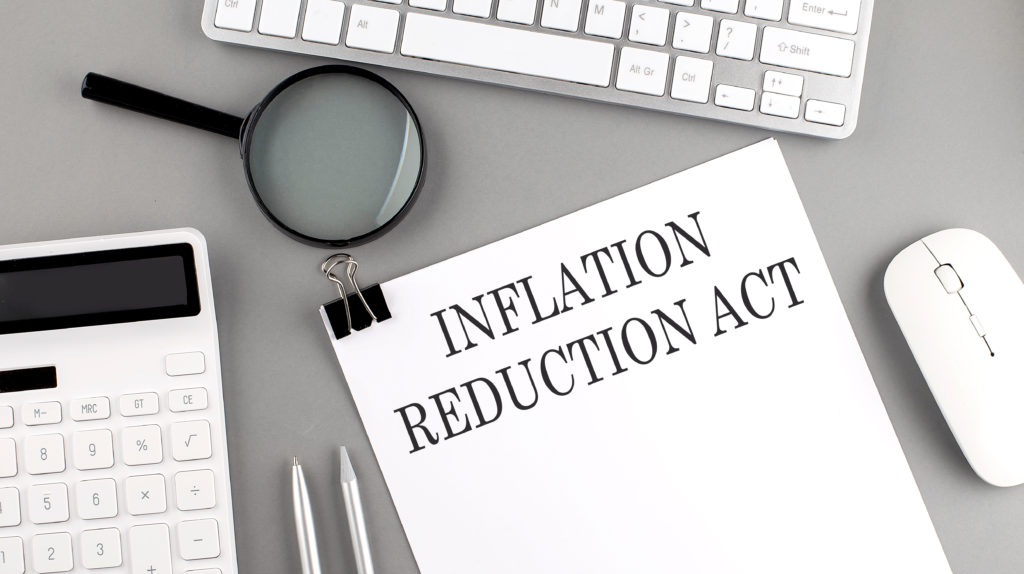
Since publishing RE Tech’s Reaction to the Inflation Reduction Act (IRA) (2022) we have begun to dive deeper, examining how the IRA could impact commercial real estate ESG initiatives. Based on our preliminary review and extrapolation of how this landmark legislation might play out over the next several years, here are some high-level recommendations to consider:
Ramp-up that building modernization and energy/reduction plan.
Take a look at those large building renovations that were previously cost-prohibitive. The IRA will provide $1 billion over the next 10 years for efficient building code adoption grants and numerous other incentives. Since this means that energy codes will likely strengthen AND there will be more resources available – you’ll want to ‘futureproof’ your assets by further accelerating energy efficiency investments and decarbonization plans, making your property more attractive to future buyers, tenants, and residents:
- The Commercial Buildings Energy-Efficiency Tax Deduction 179D has been modified to offer incentives up to $5/SF (previous cap was $1.88/SF) for improved building efficiency. Upgrades to the building envelope, HVAC, hardware, and lighting that improve efficiency by 25%+ will qualify for this incentive.
- If you are in the affordable housing space, there’s a total of $25B to take advantage of through the Department of Housing and Urban Development (HUD), the Department of Energy (DOE), the Environmental Protection Agency (EPA), and due to an extension, the Energy Efficiency Tax Credit (45L).
- If you are in the multi-family space, there’s an opportunity for rebates up to $8K/total units or 80% of the total project cost through HOMES and up to $14K/unit for electrification upgrades through the DOE.
- Real Estate Investment Trusts (REITs) and other tax-exempt organizations can participate now. Tax-exempt building owners will be able to allocate deductions to the architects, engineers, and design-build contractors.
The Department of Energy’s Better Buildings program is highly involved in this work and deploys a lot of resources; if you’re not already a partner, become a partner and tune in to their webinars and communication for the latest news.
Prime yourself to capture tax benefits, as applicable.
There is $370 Billion available in the form of tax credits, loans, grants, and rebates…but much of this may or may not be accessible to real estate investors. Consult your financial teams, tax advisors, and controllers, and get them primed to counsel you on potential tax opportunities and assess their applicability to your circumstances:
- REITs and other tax-exempt organizations including private schools and universities, religious organizations, non-profits, charitable organizations, private foundations, political organizations, and Native American tribal governments will have an easier time taking advantage of the benefits available through the credit monetization provision by transferring tax credits.
- Many tax credits expire in 5 years.
Note: Not all the details of the legislation are fully developed, the Internal Revenue Service (IRS) and Treasury Department still have work to do, but it’s never too early to start researching and putting a plan together to position your entity in a place to take advantage of these programs based on your organizational structure.
Dust off your spreadsheets and rethink the economics of renewables.
This is a nuanced (read: huge) piece of legislation, and it will take time for its various programs to roll out. But some of the positive impacts on RE Tech, LPlan for renewables to become more and more common in commercial real estate. The Investment Tax Credit (ITC) and Production Tax Credit (PTC) have been expanded and extended for at least 10 years:
- The ITC has increased back to 30% and has expanded to include other types of products including battery storage and installation, and smart technologies.
- Be sure to check out the fine print first; ITC only applies for the first installation of the renewable, non-residential projects that qualify for the PTC and can receive up to 60% credit if the project meets certain standards such as U.S.-made materials, local labor requirements, and more.
Keep in mind that national clean energy progress will change as certain cities capture more money or pilot better programs. Historically, clean energy tax credits have helped lower the cost of renewable energy by up to 85%, and we expect this trend to continue. We already see businesses, like Black Bear Energy, on the market working to help clients navigate onsite renewable energy deployment, a telltale sign that this movement to clean energy is gaining attention.
Devise an Electric Vehicle charging station plan.
There are significant incentives targeting increased electric vehicle (EV) adoption, likely stimulating increased consumer buy-in leading to more demand for charging stations and EV infrastructure across all property types:
- The maximum incentive is 30%, or up to $100K/ charging station, an increase from the previous $30K/location incentive.
- There is also a bonus incentive for EV installation in lower-income and rural areas.
- Consider developing a partnership with a supplier.
Bottomline – EV charging will increasingly be viewed as a valuable tenant/resident amenity. Make sure your properties are positioned for the future, remain up to speed on different EV platforms and technologies, and meet the demands of the changing consumer landscape.
Understand how the communities you operate in may be affected.
Seeking to address historical injustices embedded in our energy system, the IRA contains numerous programs that will attempt to reduce the social costs of climate change by up to $1.9 trillion by 2050. The factors considered to inflict the greatest social costs were rising temperatures, property damage from sea level rise, as well as other disasters and health impacts. The IRA will seek to:
- Lower the cost of energy.
- Expand access to clean energy technologies like EV charging, heat pumps, and solar energy through the Greenhouse Gas Reduction Fund (GGRF).
- Provide relief to communities that have suffered disproportionate burdens relating to climate change, pollution, transportation facilities, and construction projects.
If you have affordable housing assets, assets in underserved communities, or assets in areas heavily reliant on fossil fuel production, you can likely take advantage of even more funds through bonds, GGRF, grants, and rebates to magnify climate justice. Get creative as you find opportunities to boost the social piece of your ESG strategy.
Get involved at the local level to influence program implementation.
The Inflation Reduction Act has committed $370B to energy and climate provisions, but a good portion of these resources will likely be administered and deployed through local states, municipalities, non-profits, and other entities. It may take years for the programs mentioned above to be finalized and details to be known, but there is an opportunity for real estate leaders to shape and steer how this infusion of capital hits the market. By getting involved locally – taking a seat at the table – you can provide expert advice on how these programs can support the commercial buildings sector and your community at large.
The broad reach of investments outlined in the IRA legislation is an important catalyst for addressing the risks of climate change. We look forward to continuing to monitor the planning and implementation of this important legislation and will be communicating information and further takeaways to our clients and network. If you would like to discuss your specific needs or have questions, reach out to RE Tech at info@retechadvisors.com anytime.
Sources:
https://www.mitchellwilliamslaw.com/inflation-reduction-act-of-2022-energy/climate-provisions
Inflation Reduction Act Affordable Housing Policy Brief_0.pdf (nationalhousingtrust.org)
What does the Inflation Reduction Act (IRA) mean for EV charging? | Tritium (tritiumcharging.com)
DOE Projects Monumental Emissions Reduction From Inflation Reduction Act | Department of Energy
8.18 InflationReductionAct_Factsheet_Final.pdf (energy.gov)
FACT SHEET: Inflation Reduction Act Advances Environmental Justice – The White House
Inflation Reduction Act could cut climate damages by $1.9 trillion (cnbc.com)
The Inflation Reduction Act charts a pro-climate, pro-worker path • The Berkeley Blog
Authors

